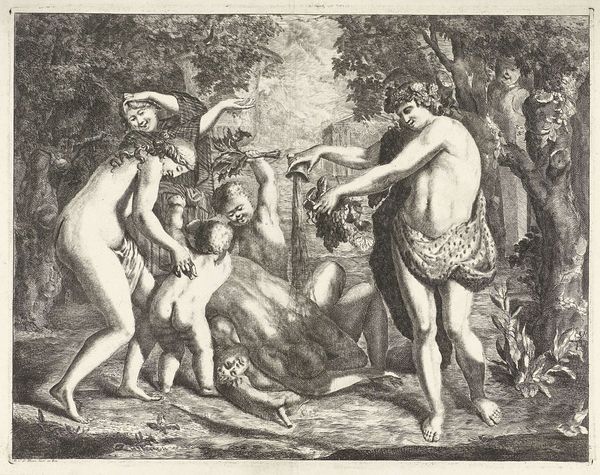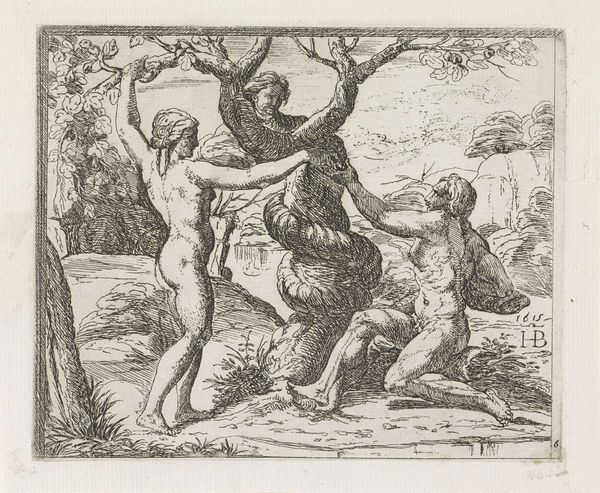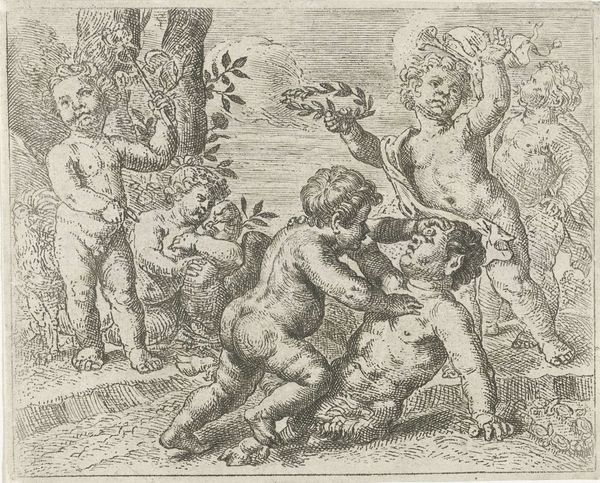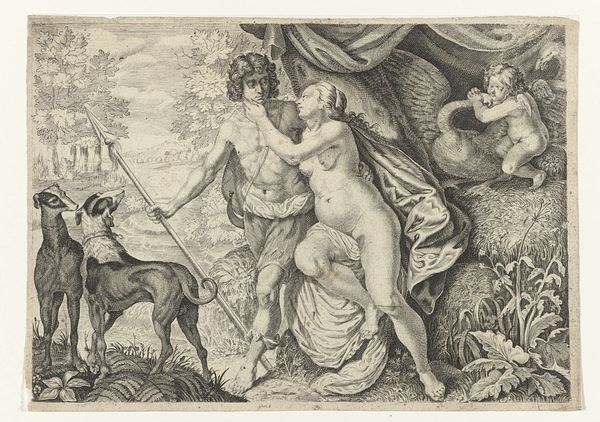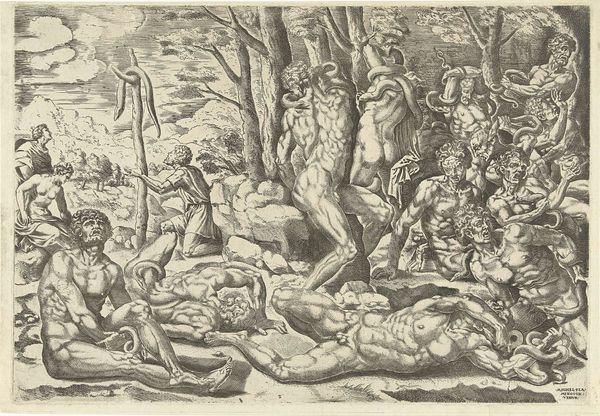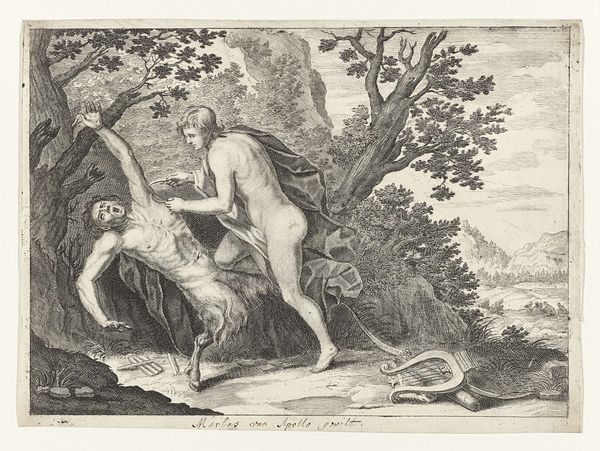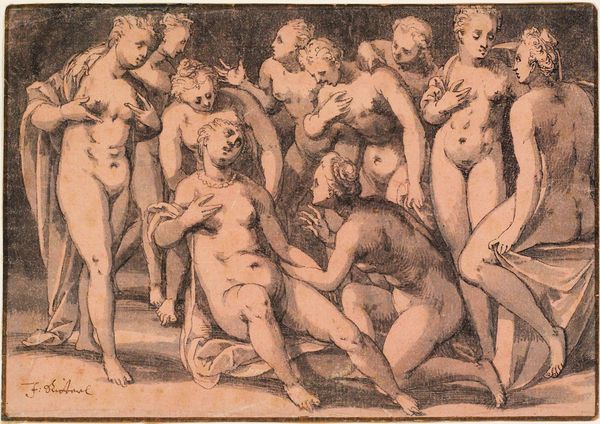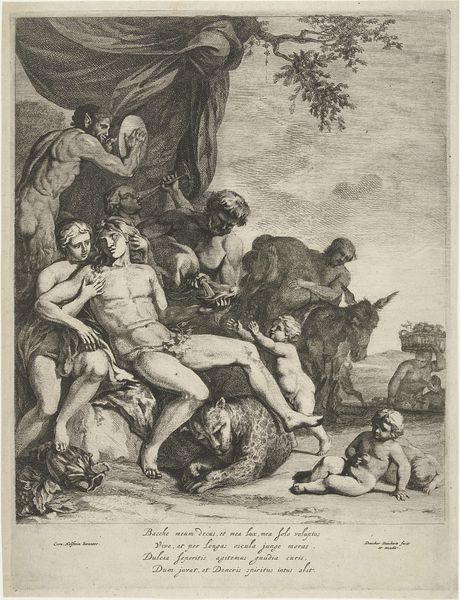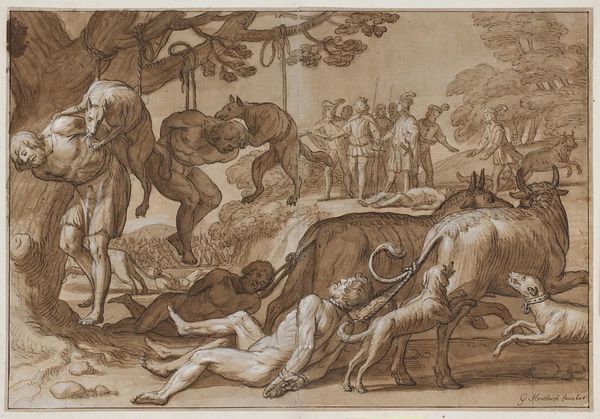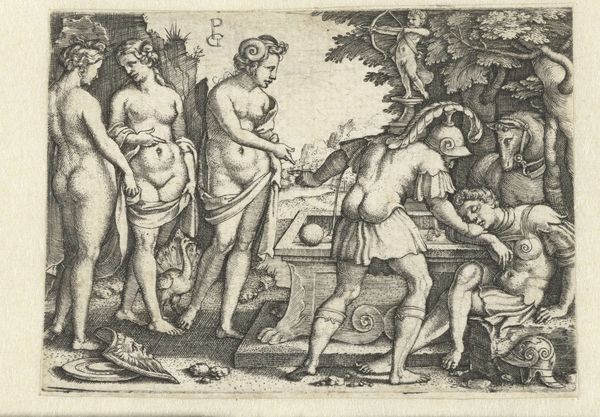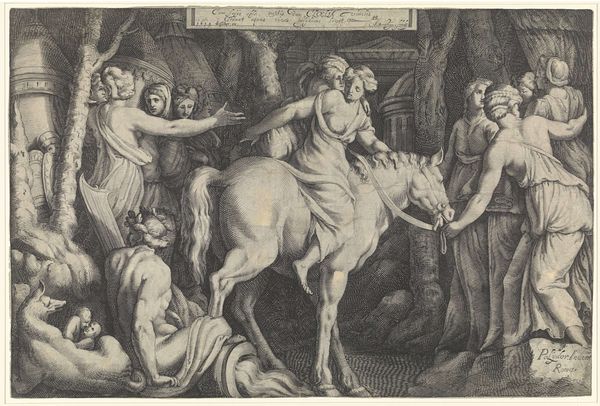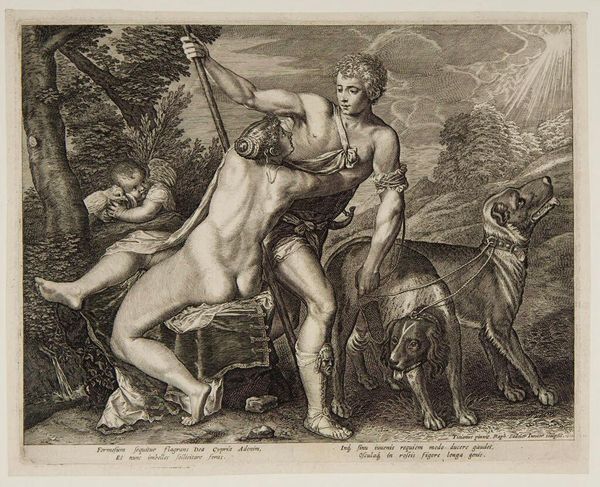
print, engraving
#
baroque
# print
#
figuration
#
genre-painting
#
history-painting
#
nude
#
engraving
Dimensions: height 309 mm, width 392 mm
Copyright: Rijks Museum: Open Domain
This print, *Landschap met een bacchanaal*, was made by David van der Plas around the turn of the 18th century, using the intaglio process of etching. The relatively humble technique is crucial to understanding this work. Etching allowed for a proliferation of images that could be widely distributed. The artist would have covered a metal plate with wax, drawn an image through it with a stylus, and then bathed the plate in acid. This would have bitten away the exposed lines, which were then inked and printed. Note the many lines, so close together they almost give the illusion of grey wash. The artist has achieved a dynamic composition by allowing the very activity of mark-making to suggest light, shadow, and depth. The bacchanaal subject, with its overt sexuality, was well-suited to the print medium. The artist cleverly engaged with the tension between the print's association with accessibility and the elite subject matter of classical mythology. This demonstrates how "fine art" and more "proletarian" forms can be deeply interconnected.
Comments
No comments
Be the first to comment and join the conversation on the ultimate creative platform.
